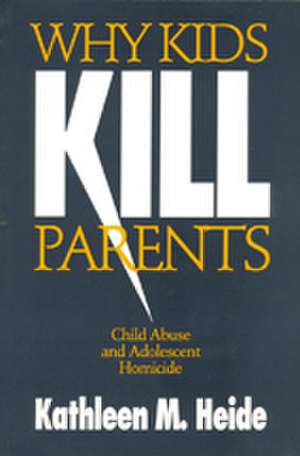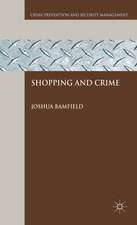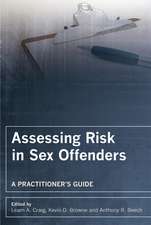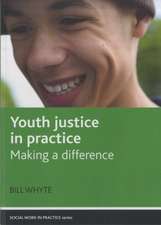Why Kids Kill Parents: Child Abuse and Adolescent Homicide
Autor Kathleen M. Heideen Limba Engleză Paperback – 10 noi 1994
This sensitive volume includes an examination of interventions that are effective in treating such children. Heide concludes that adolescent parricide offenders can be reintegrated into society through treatment, not imprisonment, and proposes ways in which the media and the educational system can help to prevent child abuse and parricide.
Preț: 609.43 lei
Preț vechi: 716.97 lei
-15% Nou
116.63€ • 121.02$ • 97.48£
Carte tipărită la comandă
Livrare economică 17-31 martie
Specificații
ISBN-10: 0803970609
Pagini: 224
Dimensiuni: 152 x 229 x 13 mm
Greutate: 0.34 kg
Ediția:Revised
Editura: SAGE Publications
Colecția Sage Publications, Inc
Locul publicării:Thousand Oaks, United States
Cuprins
PART ONE: PARRICIDE: FACTS AND ISSUES
The Phenomenon of Parricide
Child Maltreatment and Parricide
Which Youths Kill
Youths at Risk
Legal and Psychological Issues
PART TWO: CASE STUDIES
Assessment and Its Implications
Peter Jones
Scott Anders
Patty Smith
PART THREE: IMPLICATIONS, PRACTICAL SUGGESTIONS AND FUTURE DIRECTIONS
Intervention after the Tragedy - with Don McCann and Eldra Solomon
Society's Role
Notă biografică
Dr. Heide is a Full Professor in the Department of Criminology at the University of South Florida, Tampa and is an internationally recognized consultant on adolescent homicide and family violence. She is a licensed mental health counselor in the State of Florida and has been court-appointed as an expert in Florida Circuit Courts in homicide, sexual battery, juvenile, and family matters. Dr. Heide¿s publication record includes more than 100 publications and presentations in the areas of adolescent homicide, family violence, personality assessment, and juvenile justice, along with two books - Why Kids Kill Parents (1992) and Young Killers (1999). She received her B.A. from Vassar College in Psychology and her M.A. and Ph.D in Criminal Justice from the State University of New York at Albany.
Descriere
This sensitive volume includes an examination of interventions that are effective in treating such children. Heide concludes that ado
















